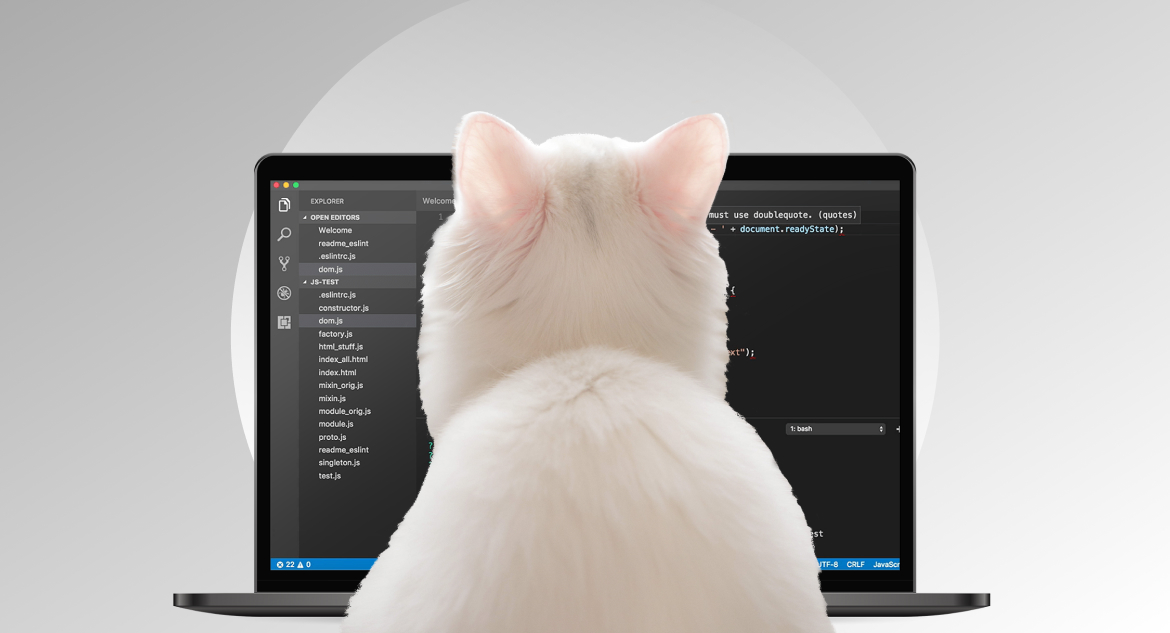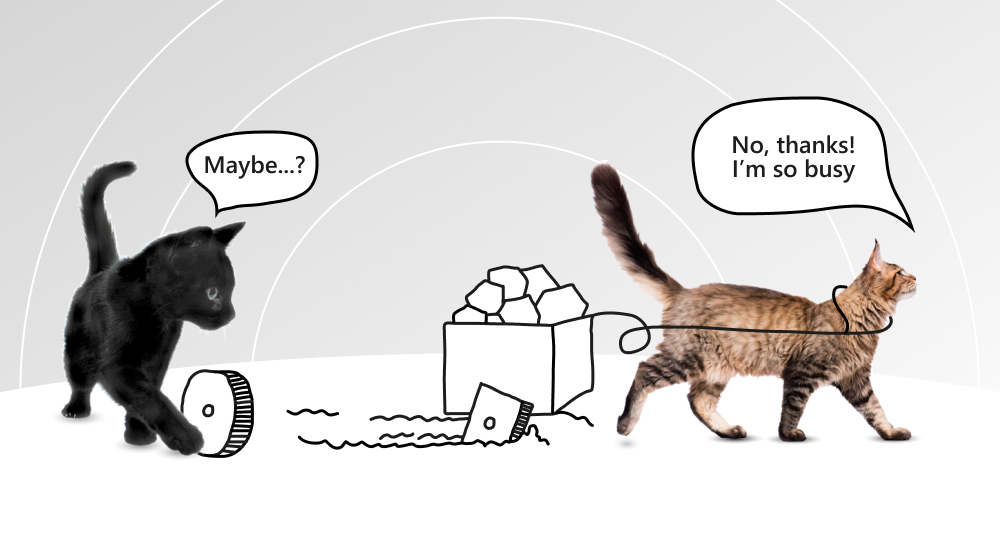Good coding practices are a set of rules that helps developers write clean code. High-quality code, in turn, ensures that applications will run smoothly and software projects will be successful. Stripe and Harris Poll did their research and found that programmers spend 13.5 hours solving technical problems and 3.8 hours fixing bad code.
The researchers also revealed that companies have to spend $85 billion annually on solving issues caused by low-quality code. If you want to avoid these problems, your development team should provide consistent and beautiful lines of code. Following coding best practices will help your specialists working with any programming language write code accurately from the very beginning.
written by:
Pavel Dichkovsky
Senior Software Developer
Good coding practices are a set of rules that helps developers write clean code. High-quality code, in turn, ensures that applications will run smoothly and software projects will be successful. Stripe and Harris Poll did their research and found that programmers spend 13.5 hours solving technical problems and 3.8 hours fixing bad code. The researchers also revealed that companies have to spend $85 billion annually on solving issues caused by low-quality code. If you want to avoid these problems, your development team should provide consistent and beautiful lines of code. Following coding best practices will help your specialists working with any programming language write code accurately from the very beginning.
Contents
How Does Bad Code Adversely Affect Your Project?
Let's talk about messy code for a moment. Sure, it might get the job done initially, but in the long run, it's a recipe for disaster. Subpar code quality doesn't just impact the current project; it casts a shadow over your entire business.
Picture this: your application gains traction and you're ready to expand, add new features, or just make some upgrades. So, you bring in another developer. Now, if your code is a mess, they're in for a rough ride. They'll have to wade through the chaos of your existing architecture, untangle convoluted data structures, and decipher the relationships between them. High-quality code, on the other hand, streamlines this process, enabling developers to navigate swiftly and implement changes seamlessly.
But here's the kicker: bad code breeds bugs. And when those bugs rear their ugly heads, your developers are in for a round of bug-hunting that eats away at precious time. If one slips through the cracks and makes it to production, brace yourself for a slew of issues down the line.
Now, let's talk about speed. Users want new features pronto. Quality code empowers development teams to deliver updates swiftly, keeping pace with user demands and staying ahead of the competition. With a smooth development process, your app remains competitive, users stay engaged, and your profits keep rolling in. It's a win-win.
What is Good Code?
Ideal code has the following features:
It's Easily Modifiable
If the architecture is well-structured, you can extend your code without much time or technical effort. The code should be expressed briefly and clearly. Code entities should not be closely related; each entity should be responsible only for its own part of the functionality.
It's Simple and Easy to Read
The majority of software requires regular enhancement. Thus, different developers contribute to a single project. And although code is, well, code, you shouldn’t have to decipher it: regardless of who opens it, they should be able to quickly read it. This means that the code has to be simple, convenient, and easily comprehensible. If these factors were taken into account, then it is possible for developers to trace the author’s train of thought and understand how the processes of software should function.
It's Safe
When coding, you must always remember the overall security of your product. Veracode revealed that 75.8% of apps have at least one security flaw, and 23.7% have numerous security issues that are usually solved for a very long time.
So, clean and elegant code reduces the cost of future changes and the development time of the application. You will gain a serious competitive advantage if you care about the quality of your code and use modern and effective development practices in your work.
13 Good Coding Practices: A Way to a Successful Project
#1 Compliance with Coding Standards and Guidelines
There are generally accepted coding standards and even programming platforms that will tell you how to follow those standards. The team members can agree in advance on how to write the blocks of code and how to act in some situations. Then the code written by different programmers will be visually similar, which will help other developers work with it.
#2 Refactoring
Refactoring is the process of improving a piece of code without writing new functionality. As a result, you get better code and the ability to efficiently maintain it. There are two refactoring approaches:
- Planned refactoring when developers initially put refactoring time into the development cycle (e.g., every six months); and
- On-demand refactoring that is done when adding new features is slowed down because they are difficult to integrate into legacy code.
Refactoring should be accompanied by tests because even minor changes can break the application. Experienced developers recommend using version control systems in order to roll back inaccurate refactoring in case of errors and try again. Yes, the code should be clear and readable. But it should primarily work.
#3 Code Review
Experienced specialists check the code of junior developers and leave their feedback. Juniors, in turn, get a chance to avoid silly mistakes, take a fresh look at their work, make improvements, and keep the code consistent. Senior developers often review their colleagues' code to share their experiences. This collaboration can improve the quality and readability of their code.
#4 Automated Testing
Automated tests allow you to find critical bugs and ensure that your code operates as intended. As a rule, developers create test cases by themselves. They run the code with different parameters and check against the already known results. They usually carry out:
- unit tests that check particular parts of software;
- complex tests that check the whole system;
- load tests that check how the product operates under load;
- regression tests that check how a modified app operates, and so on.
Tests can save you tons of time as they can find a bunch of mistakes during the refactoring process.
#5 Correct Naming
Give variables, functions, classes, methods, and constants clear and concise names. Make them understandable for the person who will read your code after a while. You will be grateful to yourself when you have to return to this code and you don't have to puzzle over what you meant when you wrote the code.
#6 Instruments
There are various tools that make the coding process faster and easier. Of course, developers can write nice code without programming instruments, but it will take longer and adversely affect their efficiency. Moreover, they can develop new tools for themselves. A convenient and flexible instrument that meets all your requirements will help you create clean code and develop your project further.
#7 Statistical Analysis
The above-mentioned code review method does not always allow you to find all the defects, so it's good practice to use statistical analysis. This is an automatic code check that does not require a programmer to run an app. It will analyze the entire code and find bugs that were missed during the code review.
#8 Test-driven Development (TDD)
According to this approach, the programmer initially thinks over the classes and their public interfaces, the interaction between them, and immediately prepares tests for them. When the public interface and interaction are declared, the developer gradually implements the program, checking how it passes the tests and meets the requirements.
#9 Documentation
In fact, programmers don't like to write design and technical documentation as this is a time-consuming process. However, this is very important. If there is no technical code documentation, then other developers will find it difficult to read and maintain the code. Don't be careless about writing documentation as you won't be able to understand your own code after a while. If the code is documented, its structure and logic are improved. Simple and clear code is readable and even self-documenting.
#10 Continuous Integration (CI)
Continuous Integration is a software development practice that requires developers to release code to a central repository on a regular basis (e.g., several times a day). Each code update is validated using automated tests, allowing the development team to spot problems at an early stage. This allows specialists to spend less time looking for problems in the code and more time creating new features.
#11 Coding Conventions
Make a list of coding conventions in which you define how variables should be declared, naming conventions, and so on. You can add, change, and delete any rules you want. It's essential to follow this list because it helps your team produce good code that can speed up the long-term software development process. The list is reusable, and developers don't have to waste time fixing old bugs. Also, you can show the set of rules to new team members, which allows them to follow the code style.
#12 Error Analysis
No matter how cool the development team is, the code will inevitably have bugs. Therefore, it's important to analyze and handle all the errors. Always fix critical bugs immediately. If the bug is minor and allows the product to complete the task without major problems, the bug may be fixed later. Don't forget about tools that can help you track errors.
#13 Commenting
Comments are explanatory lines in the computer code that allow you to understand the meaning of these lines. They will help the programmer to quickly understand someone else's code if it is necessary to change something in the program. When creating new libraries, functions, and system variables, comments will help you see the logic of the application. They will help the tester check the product better as well.
When preparing comments, you should follow some rules in order not to spoil your code with too long and messy lines. Write comments right above the code they refer to. They should be short and meaningful. Comment out all the main elements of the code like modules, functions, constants, global variables, interfaces, classes, and their constituent elements (methods, properties, constants, and others).
Last Word
We've told you about the coding best practices that help developers write clean code and effectively maintain the project. In addition, we'd like to discuss the quality and speed issue. There is an opinion that it is more important to launch a project earlier, despite the presence of any bugs, and then finalize it, than initially wasting time writing perfect code. Slower temps and rigorous testing are believed to lead to higher stability in production systems. The DORA report upends this assumption.
The researchers found out which approach makes the team most effective. More frequent code releases reduce the number of serious bugs. Teams that prefer to launch a fully ready product or release updates less frequently face a lot of problems and spend too much time solving them. The research also demonstrates that these development teams are more organized and build processes better.
Nevertheless, we don't recommend you to be fully focused on the speed. Everything depends on your project. If you are building a banking application, spend more time on testing since there is a risk of losing a significant amount of money due to a minor bug. If your product does not require support and improvements (for example, you are working upon a landing page), just make sure that it works and launch it in order to achieve the desired result on time.
If you want to learn more about the coding best practices or discuss them with our specialists, please visit our website or get in touch with our support team.

Contacts
Feel free to get in touch with us! Use this contact form for an ASAP response.
Call us at +44 151 528 8015
E-mail us at request@qulix.com











